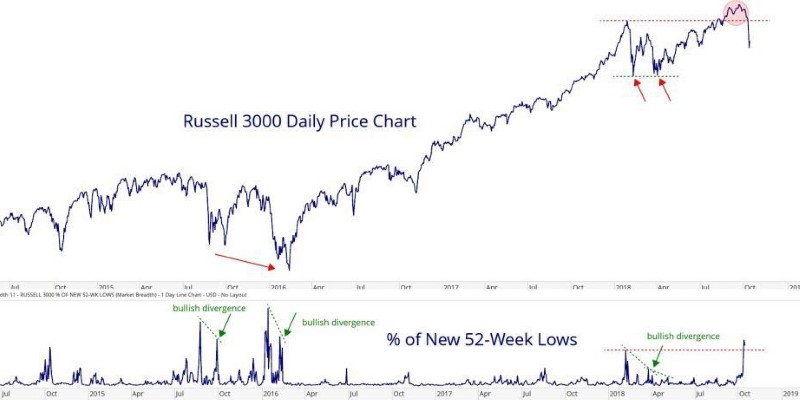Demystifying the Russell 3000 Index: Your Gateway to Investment Success
The Russell 3000 Index is one of those terms you may have encountered while delving into the world of stocks and investments. But what exactly is it, and why does it matter? In this guide, we'll walk through the basics of the Russell 3000 Index, its components, its calculation, and its significance in the stock market.
From understanding its role as a comprehensive snapshot of the U.S. equity market to exploring its impact on investment strategies, we'll delve into the intricacies of this index to help you navigate the complexities of the financial world with confidence.
Understanding the Russell 3000 Index:
The Russell 3000 Index is a cornerstone of the investment landscape, offering a comprehensive gauge of the U.S. equity market's vitality and trajectory. Crafted by the esteemed index provider FTSE Russell, previously recognized as the Russell Investment Group, this benchmark index meticulously tracks the performance of the largest 3000 publicly traded companies across the United States.
Covering almost the entire investable U.S. equity market, the Russell 3000 Index includes approximately 98% of its total scope, offering investors an expansive perspective on the nation's corporate scene. Consequently, it plays a pivotal role as a benchmark for evaluating investment returns and serves as an essential navigational aid, helping investors navigate the dynamic fluctuations of the stock market.
How Is It Calculated?
The Russell 3000 Index is weighted by market capitalization, meaning that companies with higher market values significantly impact the index's performance. Market capitalization is calculated by multiplying the number of a company's outstanding shares by its current stock price.
Components of the Russell 3000 Index:
The Russell 3000 Index, a widely followed benchmark for the U.S. equity market, comprises three distinct sub-indexes, each representing a different market segment.
Russell 1000 Index:
The Russell 1000 Index comprises the largest 1000 publicly traded companies in the United States based on market capitalization. These companies are often considered blue-chip stocks and typically have well-established market positions and strong financial performance. Investors usually view the Russell 1000 as a barometer for the overall health of the large-cap segment of the U.S. stock market.
Russell 2000 Index:
The Russell 2000 Index consists of the following 2000 companies in market capitalization after the Russell 1000. These companies are generally smaller than those in the Russell 1000 and are often called small-cap stocks. The Russell 2000 is commonly used as a gauge for the performance of small-cap companies and is seen as a reflection of the growth potential within the U.S. economy.
Russell 3000 Index:
The Russell 3000 Index combines the Russell 1000 and Russell 2000 indexes, encompassing a broad spectrum of companies ranging from large-cap to small-cap. This comprehensive index exposes investors to the entire U.S. stock market and is widely used as a benchmark for measuring the overall performance of U.S. equities.
By including companies of various sizes and market capitalizations, the Russell 3000 offers a comprehensive view of the U.S. equity market landscape, making it an invaluable tool for investors seeking diversification and market insights.

Significance in the Stock Market:
Now, you might wonder why you care about the Russell 3000 Index. Well, here are a few reasons:
Investment Benchmark:
Many investors and fund managers use the Russell 3000 Index as a benchmark to evaluate their investment portfolios' performance against the broader market. By comparing their returns to those of the index, investors can assess how well their investments perform relative to the overall market trends. This benchmarking process helps investors make informed decisions and adjust their strategies to meet their financial goals.
Diversification:
Investing in a fund or ETF (exchange-traded fund) that tracks the Russell 3000 Index offers investors exposure to a diversified basket of U.S. stocks. With over 3000 companies in the index, investors can spread their investment across multiple sectors and industries, reducing individual stock risk. This diversification helps mitigate potential losses and provides opportunities for steady long-term growth.
Indicator of Economic Health:
The Russell 3000 Index can reflect shifts in investor sentiment and overall economic conditions. When the index experiences significant fluctuations, it often indicates changes in market confidence, economic growth prospects, or geopolitical factors affecting businesses. As such, analysts and economists closely monitor the performance of the Russell 3000 Index as part of their broader economic analysis, using it as a barometer to gauge the health of the U.S. economy.
Investing in the Russell 3000 Index
Investors keen on tapping into the potential of the Russell 3000 Index have a variety of avenues to explore:
Index Funds:
These investment vehicles, be they mutual funds or ETFs, are meticulously crafted to mirror the performance of the Russell 3000 Index. They offer investors low expenses coupled with extensive market coverage.
ETFs:
Exchange-traded funds (ETFs) offer investors a seamless and flexible approach to investing in the index. With the ability to trade throughout the day, ETFs offer convenience and liquidity.
Mutual Funds:
Certain mutual funds are tailored to closely follow the movements of the Russell 3000 Index, furnishing investors with diversified exposure to the market.

Conclusion:
In conclusion, the Russell 3000 Index is a crucial pillar in the world of investments. It offers a comprehensive view of the U.S. equity market's dynamics and serves as a reliable benchmark for investors. With its meticulous calculation methodology and broad coverage of over 3000 companies, this index provides valuable insights into market trends and economic conditions.
Whether as a benchmark for portfolio performance, a tool for diversification, or an indicator of economic health, the Russell 3000 Index holds significance for investors of all levels. By understanding its components and exploring investment opportunities, investors can navigate the financial landscape with confidence and clarity.












